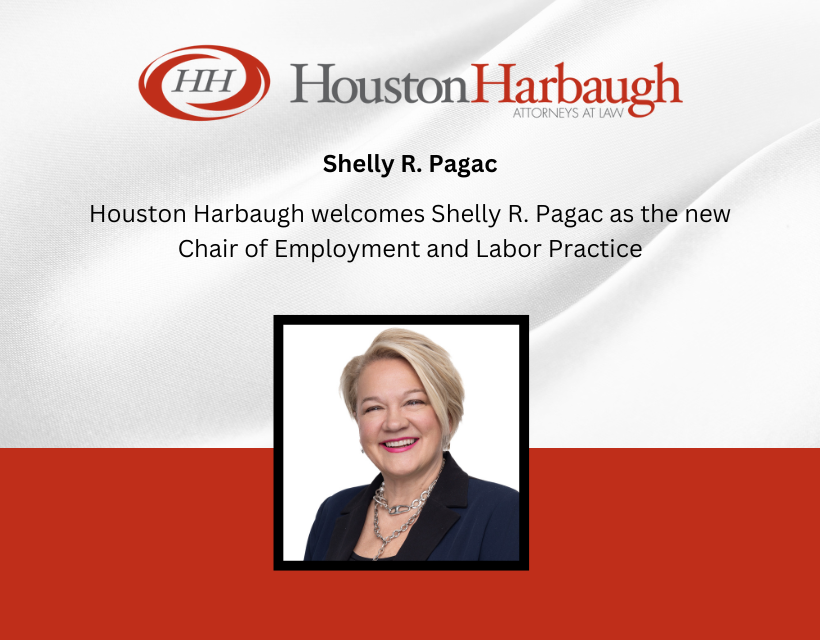PA Federal Business Decisions Volume 15, No. 4
Removal to Federal Court Improper Where State Claims Not Equivalent to Federal Copyright Claim
In CognetX, Inc. v. Haughton, Civ. No. 10-2293, 2010 U.S. Dist. LEXIS 88183 (E.D. Pa. Aug. 26, 2010) (opinion by J. Rufe), Defendants Robert Houghton (“Houghton”) and BusinessOne Technologies, Inc. (“BOT”) argued that Plaintiff CognetX, Inc. (“CognetX”) disguised a copyright action as a state law claim as a way to avoid federal jurisdiction. As a result, the case was removed to federal court. CognetX then filed an expedited motion to remand, arguing that because CognetX did not have a registered copyright, federal jurisdiction was lacking.
Defendant Houghton acted as president, secretary and treasurer of CognetX from 2000 until 2010. Pursuant to an employment agreement, CognetX argued that Houghton was forbidden from disclosing CognetX information as well as competing with CognetX. In early 2000, CognetX created the “MCHMaestro,” which it believed would generate significant revenue for the company. However, BOT began developing a substantially similar product called the “Maestro” in 2005. CognetX believed BOT’s product contributed to the deterioration of CognetX’s business. CognetX further alleged that when Houghton acquired BOT and became BOT’s majority shareholder in 2003 or 2004, he breached his fiduciary duties to CognetX as well as misappropriated the company’s assets. CognetX eventually terminated Houghton in 2010.
CognetX’s complaint included the following twelve counts: breach of fiduciary duty, concerted tortious conduct, usurpation of corporate opportunity, fraud/misrepresentation, breach of contract, breach of covenant of good faith and fair dealing, misappropriation of trade secrets, conversion, unfair competition, unjust enrichment, accounting and appointment of receiver. Following several conferences, hearings and a brief discovery period, Defendants filed a joint notice of removal. According to Defendants, the Copyright Act preempted CognetX’s conversion, misappropriation of trade secret, unjust enrichment and unfair competition claims, which therefore invoked federal jurisdiction.
Typically, a federal copyright action cannot be filed without a registered copyright. According to the court, section 411(a) requires as a precondition to filing a federal copyright action that the plaintiff have a registered copyright. However, Defendants asserted that under the Reed Elsevier v. Muchnick decision, federal jurisdiction is not defeated due to lack of copyright registration. Though distinguishable, the court recognized that it was required to address aspects of the Reed Elsevier decision, namely that the subject matter of the copyright may still be addressed in the federal courts even without a registration.
The court began by addressing whether Plaintiff’s state law claims were within the subject matter of the Copyright Act. Removal to federal court is appropriate if federal law preempts the state law claims. Section 301(a) of the Copyright Act contains an express preemption provision while 28 U.S.C. § 1338(a) provides original and exclusive jurisdiction to district courts for civil copyright cases. The exclusive rights protected by the Copyright Act are as follows: “reproduction; preparation of derivative works; distribution by sale, rental, lease or lending; public performance, in the case of motion pictures or audiovisual works; and public display of individual images from motion pictures or audiovisual works.” The court determined that CognetX did not assert any of the above rights in its complaint. The court went on to note that “[i]n order for a state common law or statutory claim to be preempted by the Copyright Act, a defendant must show that the state law seeks to enforce rights that are equivalent to the exclusive rights of copyright.” If the state claim requires additional elements beyond those of the Copyright Act, equivalent rights do not exist, and thus, there cannot be preemption. For example, the breach of a duty of trust or confidence by improper disclosure of confidential information is not an element to copyright infringement but is an element for misappropriation of trade secrets in state claims.
The court found that because the state claims for misappropriation of trade secret, conversion, unfair competition and unjust enrichment were not equivalent to a federal copyright claim, the alleged breaches of duties by Houghton were not preempted by federal law. Because federal jurisdiction was lacking, the court granted CognetX’s motion to remand.
Court Decides Sham Litigation Case Involving Mixed Claim Scenario
In Wellbutrin SR Antitrust Litigation; Medical Mutual of Ohio, Inc. v. GlaxoSmithKline PLC, et al., Nos. 04-5525, 05-396, 2010 U.S. Dist. LEXIS 90156 (E.D. Pa. Aug. 31, 2010) (opinion by J. Stengel), GlaxoSmithKline PLC, et al. (“GSK”) filed a renewed motion for summary judgment arguing that an entire lawsuit cannot be objectively baseless if a “non-sham” claim is asserted with a “sham” claim together in the same lawsuit. The filing of the renewed motion was prompted by a decision from the court on March 31, 2010, when the court found that GSK had probable cause to file suit alleging infringement of the ‘994 Patent (the “non-sham” claim) but that a genuine issue of material fact precluded a finding that GSK also had probable cause to file suit alleging infringement of the ‘798 Patent (the “sham” claim).
By way of background, the issues relating to this case began in July 2000, when Eon, a generic drug manufacturer, submitted an abbreviated new drug application for generic Wellbutrin SR, and in the application, Eon stated that it had not infringed the ‘798 Patent. On November 29, 2000, GSK filed suit against Eon alleging infringement of the ‘798 and ‘994 Patents, which triggered a 30-month stay precluding Eon from marketing its generic version of Wellbutrin. On January 24, 2002, the FDA granted tentative approval to the generic Wellbutrin, which meant that the FDA would have granted approval for marketing the drug but for the 30-month stay. On August 13, 2002, the court denied Eon’s motion for summary judgment on the ‘798 Patent and granted Eon’s motion for summary judgment on the ‘994 Patent. GSK eventually settled its ‘798 infringement claim against Eon. In November 2003, after the 30-month stay expired, Eon received FDA approval for the generic Wellbutrin; however, GSK obtained a temporary restraining order and preliminary injunction preventing Eon from marketing the drug before the trial on the ‘798 claim. In January 2004, the Federal Circuit stayed the injunction, and Eon began marketing its generic drug.
As part of its argument to support the renewed motion, GSK asserted that, because the court found previously that GSK had a reasonable basis for filing the ‘994 claim and because the ‘994 claim and the ‘798 claim were both included in one lawsuit, the court must find that GSK had a reasonable basis to file the lawsuit. GSK relied on only a few cases in an attempt to support its overall position. GSK then directed the court to its own language in the summary judgment opinion and attempted to craft the issue as whether the facts and the law as they were when GSK filed suit against Eon would have given GSK a reasonable expectation of success. Specifically, GSK argued that because the court already found that GSK had a reasonable expectation of success as to the ‘994 claim at the time the lawsuit was filed, the court must find that any lack of reasonable expectation of success on the ‘798 claims had no bearing on the sham litigation claim.
The court acknowledged that GSK’s argument was novel and creative but ultimately disagreed with GSK. The court concluded that an argument that the language in the opinion indicated that success on one claim would end Plaintiffs’ suit ignored the underlying facts relating to the opinion. The summary judgment opinion included language about the facts and the law that was directed to each patent claim, the court issued two separate judgments and the court analyzed GSK’s reasonable expectations of success on each claim, which resulted in two separate conclusions. In the end, the court agreed with Plaintiffs that a dismissal of the claims would have ignored the fact that the ‘798 claim, in and of itself, was sufficient to cause antitrust damage because that claim resulted in the continuation of GSK’s 30-month protection stay after the ‘994 claim was dismissed on summary judgment.
As an alternative argument, GSK asserted that the damage period should not have included any time prior to the date when the court dismissed the ‘994 Patent claim that was filed against Eon. The court denied GSK’s motion to limit the damages period and agreed with Plaintiffs that the issue was an issue to be submitted to the jury.
– Contributed by Esq., Houston Harbaugh, Pittsburgh, Pennsylvania;
Modest Movement Makes Stock Shift Material
Judge Goldberg of the Eastern District recently found that Robert Berlacher and several funds he oversaw (collectively “Berlacher”) were liable for some, but not all, of the securities fraud claims raised against them by the Securities and Exchange Commission. SEC v. Berlacher, No. 07-3800, 2010 U.S. Dist. LEXIS 95759 (E.D. Pa. Sept. 14, 2010) (opinion by J. Goldberg). Berlacher was offered opportunities to buy discounted stock in several companies at private sales, and he was allegedly: 1) told that buying the stock would limit his ability to trade other shares of the companies; and 2) required to sign forms stating that he had not and would not engage in short sales of the stock for several months, at which time the general public would be told about the private sales. The court could not determine what Berlacher was told, but he did determine that Berlacher signed the forms and nevertheless engaged in some prohibited short sales. This conduct was sanctionable if the sales had a material effect on the stock’s share price, and the court found that it did. The facts did not show that Berlacher’s actions had any substantial effect on share price, but the court found that the actions were material because they “so altered the ‘total mix’ of information available to the investor that [they] had the potential to affect [an] investment decision.” Perhaps because the “materiality” of Berlacher’s actions was modest, the court found Berlacher liable but declined to impose any injunctive relief, allowed the profits that Berlacher was required to disgorge to be offset by some of his trading costs, and declined to impose civil penalties in addition to the required disgorgement.
– Contributed by Jason A. Spak, Esq., Houston Harbaugh, Pittsburgh, Pennsylvania; jspak@psmn.com
Court Highlights Lanham Act and Gist of Action Doctrine in Deciding Motion to Dismiss
In Brown & Brown, Inc. v. Cola, Civ. Action No. 10-3898, 2010 U.S. Dist. LEXIS 106167 (E.D. Pa. Oct. 4, 2010) (opinion by J. Buckwalter), the plaintiffs, Brown & Brown, Inc. and two of its subsidiaries (collectively “Brown & Brown”), filed suit against two of its former employees, Robert Cola and Ryan Tola, and a competitor, Doyle Alliance Group (“Doyle Alliance”), arising from a series of alleged unfair trade practices, misappropriation of trade secrets, breaches of employment agreements, and tortious interference. The court granted in part and denied in part Defendants’ motion to dismiss Plaintiff’s complaint.
Brown & Brown, an insurance broker and service company, relied upon client relationships which were developed through the training of its individual brokers. Specifically, broker training included access to Brown & Brown’s proprietary business information, including information about its insurance services, business strategies, pricing and customers.
In 2004, Brown & Brown purchased the assets of an insurance brokerage business in its geographical market, Doyle Consulting. Pursuant to the asset purchase agreement, Brown & Brown acquired, inter alia, Doyle Consulting’s business, tangible personal property, good will and intellectual property, including all trademarks, trade names, and all derivatives thereof. Both Cola and Tola were employees of Doyle Consulting prior to the execution of the asset purchase agreement. Upon consummation of the asset purchase agreement, Cola and Tola entered into employment agreements with Brown & Brown, the terms of which were substantially similar. In pertinent part, the employment agreements prohibited Cola and Tola from soliciting Brown & Brown’s customers while employed and for 24 months thereafter, disclosing Brown & Brown’s proprietary business information, soliciting Brown & Brown’s employees to work for a competitor, or organizing any business activity competitive with the work being engaged in by Cola or Tola. Even so, the employment agreements did not prohibit Cola or Tola from going to work for competitors so long as the foregoing conditions were observed and the employer was made aware of the agreements and corresponding limitations.
Over time, both Cola and Tola advanced to high level executive positions. Nevertheless, in March of 2010, the original founder of Doyle Consulting began a new business, Doyle Alliance, which Brown & Brown maintained was specifically designed to poach its customers, confuse the public, and capitalize on the good will that the “Doyle” name had engendered in the market. In June of 2010, Cola and Tola resigned and accepted employment with Doyle Alliance. According to Brown & Brown, Cola and Tola solicited Brown & Brown customers both before and after their respective resignations. Brown & Brown claimed that the Defendants’ actions caused it to suffer damages in excess of $2 million.
In August 2010, Brown & Brown filed suit against Cola, Tola, and Doyle Alliance asserting claims of unfair competition and trademark infringement under the Lanham Act, state law unfair competition claims, breach of contract claims, alleged breaches of fiduciary duties and duties of loyalty, tortious interference claims based both on relationships with Brown & Brown’s customers and employees, misappropriation, conversion and unjust enrichment. Defendants responded to the Complaint with a motion to dismiss pursuant to Rule 12(b)(6) for failure to state a claim upon which relief could be granted.
First, Defendants asserted that Brown & Brown’s claims under the Lanham Act for unfair competition and trademark infringement failed as a matter of law because the “Doyle” name was not a valid and legally protectable trademark, because Brown & Brown had not shown ownership of the trademark and because Brown & Brown had not alleged a likelihood of confusion sufficient to justify recovery. Defendants further maintained that Cola and Tola could not be held personally liable under the Lanham Act. The court, however, rejected Defendants’ assertions and allowed the Lanham Act claims to proceed. In so doing, the Court recognized that personal names can serve as a trademark only where they are inherently distinctive or where the name has acquired distinctiveness through secondary meaning. That is, the requisite distinctiveness may be gained where the consuming public associates the name specifically with its business. Because Brown & Brown still used the Doyle name in its business and because Brown & Brown alleged in the complaint that the “Doyle” brand was distinctive and known in the market, the court found that Brown & Brown had adequately alleged that the “Doyle” name constituted a valid and legally protectable mark.
Moreover, the court had no trouble concluding that Brown & Brown acquired ownership of the “Doyle” name through the asset purchase agreement and that its ownership thereof included derivatives such as “Doyle Alliance,” at least for purposes of ruling on a motion to dismiss. Furthermore, the court determined that Doyle Alliance was “confusingly similar” to Doyle Consulting such that a likelihood of confusion would exist in the marketplace. In undertaking this examination, the court engaged in a qualitative analysis of the relationship between the names Doyle Alliance and Doyle Consulting, and it found that the situation was exacerbated by the fact that Doyle Alliance sought to directly compete with Doyle Consulting in the same industry and geographical region. Finally, the court recognized that under the Lanham Act, Cola and Tola could each be held personally liable for their alleged violations of the Act. As such, the court denied Defendants’ motion to dismiss Brown & Brown’s claims under the Lanham Act.
Defendants also moved to dismiss Brown & Brown’s state law tort claims based upon the “gist of the action” doctrine. The gist of the action doctrine prevents contract claims from being re-asserted as tort claims. Thus, where the tort claims arise only from the breach of duties that exist because of the contract between the parties, those tort claims must be dismissed. In short, only where plaintiffs assert the breach of duties that are collateral to a contract and otherwise imposed upon the parties by societal norms can a plaintiff recover in tort.
In accordance with those principles, Defendants maintained that Brown & Brown’s breach of contract claims subsumed their additional claims for breach of fiduciary duty/loyalty, tortious interference, conversion and misappropriation and should therefore be dismissed. With respect to the claims for breach of fiduciary duty/loyalty and for tortious interference with customer and employees, the court agreed. As the court observed, the duties allegedly breached by the Defendants as to those claims arose solely from the parties’ respective contractual obligations, not any underlying social policy. Thus, the gist of the action doctrine mandated that those claims move forward only in the context of an alleged breach of contract.
Inasmuch as the conversion and misappropriation claims revolved around personal property and/or confidential and proprietary information, the court held that those tort claims could go forward because the duties that were allegedly breached were not derived merely from the contract between the parties. Rather, personal property and confidential, proprietary information may not be lawfully converted or misappropriated, regardless of whether any contract exists between the parties to the conversion or misappropriation. However, to the extent that the conversion and misappropriation claims were based upon the conversion or misappropriation of customers or business, those claims were dismissed because the parties’ contracts prevent such forms of competition.
Finally, the court denied Defendants’ motion to dismiss Brown & Brown’s unjust enrichment claims because Defendants disputed the enforceability of the subject contracts. Had the Defendants admitted that the contracts were enforceable, the unjust enrichment claims would have been duplicative and therefore dismissed. The court also dismissed additional duplicative claims that were assessed on separate counts in the complaint.
Federal District Court Dismisses Equitable Estoppel Claim but Allows Cause of Action Based on Promissory Estoppel to Proceed as a Quasi-Contractual Claim
In GlassHouse Systems, Inc. v. International Business Machines Corp., No. 08-2831, 2010 U.S. Dist. LEXIS 111053, (E.D. Pa., Oct. 19, 2010) (opinion by J. Brody), Plaintiff, GlassHouse Systems, Inc. (“GlassHouse”) filed suit against International Business Machines Corporation (IBM) alleging counts of promissory estoppel, breach of fiduciary duty, negligent misrepresentation, equitable estoppel, intentional interference with business advantage and unjust enrichment arising from the parties’ agreement authorizing GlassHouse to sell IBM products.
GlassHouse was an authorized IBM business partner since 1998 by virtue of a Business Partner Agreement (“Agreement”). IBM contracted with thousands of independent business partners (BPs) to market IBM services and products to end-users, and in particular, users who purchased high-end computer products requiring servers with significant capacity and speed. These products and services were known as “System z” products. Thirteen BPs (including GlassHouse) sold the z products and became known as z-BPs. In 2002, IBM developed a discounted pricing program for its z-BPs called Opportunity Development Pricing (“ODP program”). The ODP program rewarded z-BPs that successfully persuaded end-users to adopt System z products. The parameters in which the ODP program operated were governed by the Business Partner Agreement. The ODP program also included a “self-policing” process among the thirteen z-BPs.
In August 2007, a z-BP competitor, Mainline, began to pursue an opportunity to sell z products to SEI Investments, Inc. (SEI). Essentially, IBM awarded both Mainline and GlassHouse the ODP discount. Mainline won the bid from SEI. The central purpose of creating the ODP program was to reward z-BPs that spent a considerable amount of time developing and marketing a sales opportunity with an end-user. It was GlassHouse’s position that IBM breached its promises about maintaining an exclusive period of discounted pricing. Specifically, GlassHouse contended that IBM should not have given an ODP discount to Mainline because it breached the parameters set forth in the Agreement regarding how the z-BPs were to engage in self-policing and because Mainline did not invest in its sales activities or market as aggressively as GlassHouse did.
IBM previously filed a motion seeking dismissal of the claims of breach of fiduciary duty, negligent misrepresentation, and unjust enrichment on the basis that they were precluded by the Agreement between IBM and GlassHouse. The federal district court agreed, dismissing those claims, along with the count for interference with business advantage due to insufficient factual allegations in the complaint. The remaining claims of promissory estoppel and equitable estoppel were not dismissed because they depended on allegations not clearly covered by the Agreement. In the matter sub judice, IBM moved for summary judgment on both claims under F.R.C.P. 56 based on three arguments: 1) there was insufficient evidence to support the existence of a clear and unambiguous promise necessary to establish a promissory estoppel claim; 2) GlassHouse had not established facts necessary to prevail on an equitable estoppel claim; and 3) the parties’ Agreement precluded GlassHouse from bringing both estoppel claims.
The parties agreed New York law applied, and the court noted that New York was the state with the greatest interest in application of its substantive law to this case. Summary judgment was granted as to the equitable estoppel claim but was denied as to the promissory estoppel count. The court noted that GlassHouse failed to identify a theory of equitable estoppel that was distinct from its promissory estoppel claim. With respect to the promissory estoppel allegations, however, the court held that the claim was more quasi-contractual in nature because the cause of action was based on the ODP program protocols. GlassHouse argued that it relied on IBM’s promises, to its detriment, in performing its marketing and sales activities. GlassHouse also argued that it relied on IBM’s promises pertaining to the regulation of the z-BP competition and the self-policing process. The court agreed that IBM’s promises were in fact based on how IBM would treat competing z-BPs. Because a factfinder could determine that the Agreement did not cover how either party should or would interact with other z-BPs, thereby limiting the scope of the contract, summary judgment was not appropriate as to that claim.
Accused Product Made Before the Subject Matter of the Asserted Claims Renders Patent Invalid
In Teva Pharmaceutical Industries Ltd. v. AstraZeneca Pharmaceuticals LP, et al., No. 08cv4786, 2010 U.S. Dist. LEXIS 112597 (E.D. Pa. Oct. 20, 2010) (opinion by J. Yohn), Plaintiff Teva Pharmaceutical Industries Ltd. (“Teva”) filed a patent infringement suit against AstraZeneca Pharmaceuticals LP and IPR Pharmaceuticals, Inc. (collectively “AstraZeneca”), alleging that AstraZeneca’s CRESTOR® prescription drug products infringed certain claims of U.S. Patent No. RE39,502 (“the ‘502 Patent”). AstraZeneca moved for summary judgment on the ground that the ‘502 Patent was invalid due to prior invention pursuant to 35 U.S.C. § 102(g)(2).
CRESTOR® is a prescription drug belonging to a group of drugs called statins that are used to treat high cholesterol. AstraZeneca began selling the drug after the FDA approved a New Drug Application in August 2003. However, in early 1999, the researchers developed the formulations for all dosage strengths of the drug and began development of the commercial products (referred to internally as rosuvastatin sales formulations). In mid 1999, AstraZeneca manufactured numerous batches of 2.5 mg and 5.0 mg sales formulation tablets, which contained the same ingredients as the commercial CRESTOR® tablet cores. In the late summer of 1999, a researcher gave a presentation on the sales formulation tablet cores, which consisted then of the same ingredients and amounts that exist in the current commercial products. In the fall of 1999, AstraZeneca manufactured a batch of coated tablets and later submitted the records from the batch to the FDA as part of the New Drug Application. On January 26, 2000, a patent application was filed in Great Britain on behalf of AstraZeneca, but eventually the application was terminated. On August 4, 2000, AstraZeneca filed a patent application in the United States, which issued as U.S. Patent No. 6,316,460 (“the ‘460 Patent”).
Prior to December 1, 1999, Teva began researching certain stabilizing formulations that contained a certain statin drug called pravastatin. On December 1, 1999, Teva performed stability tests on a pharmaceutical formulation containing pravastatin and confirmed that the formulation was exceptionally stable despite other traditional stabilizers being used in the formulation. On April 10, 2000, Teva filed a provisional patent application disclosing the invention. On April 9, 2001, Teva filed a patent application regarding this invention, which issued as U.S. Patent No. 6,558,659 (“the ‘659 Patent”) on May 6, 2003. Teva filed an application for reissue of the ‘659 Patent on March 17, 2005, which reissued as the ‘502 Patent on March 6, 2007.
Pursuant to 35 U.S.C. § 102(g)(2), a person shall be entitled to a patent unless . . . before such person’s invention thereof, the invention was made in this country by another inventor who had not abandoned, suppressed, or concealed it. In determining priority of invention under this subsection, there shall be considered not only the respective dates of conception and reduction to practice of the invention, but also the reasonable diligence of one who was first to conceive and last to reduce to practice, from a time prior to conception by the other. The courts have held that conception is the formation, in the mind of the inventor, of a definite and permanent idea of the complete and operative invention and must encompass all limitations of the claimed invention, and is complete only when the idea is so clearly defined in the inventor’s mind that only ordinary skill would be necessary to reduce the invention to practice without extensive research or experimentation. Furthermore, the courts have held that an actual reduction to practice is established when the inventor demonstrates that s/he constructed an embodiment or performed a process that met all the limitations of the allegedly infringed patent, and s/he determined that the invention would work for its intended purpose.
AstraZeneca argued that, if the accused products infringe as alleged by Teva, then the asserted claims of the ‘502 Patent were invalid because AstraZeneca conceived of and reduced to practice the accused products prior to when Teva invented its subject matter covered by the ‘502 Patent. As a threshold matter, the court determined that there was no genuine issue of material fact that AstraZeneca arrived at and manufactured the product formulations before Teva conceived of and reduced to practice the subject matter of the ‘502 Patent. Also, the court agreed that AstraZeneca was able to concede Teva’s allegations of infringement, for purposes of summary judgment, in order to satisfy its burden that its earlier-made CRESTOR® products met all the limitations of the asserted claims of the ‘502 Patent.
Teva challenged AstraZeneca’s argument by claiming that AstraZeneca failed to show prior invention of the subject matter because there was no evidence that AstraZeneca appreciated that a certain compound in CRESTOR® contributed to the overall stability of the formulation. Teva’s expert stated that the use of certain compounds to stabilize the overall formulations was not disclosed in the patent application filed in Great Britain, the ‘460 Patent or the New Drug Application; however, he acknowledged that the compounds were disclosed in these documents for uses other than stabilization. AstraZeneca argued that it was not necessary to appreciate how exactly the allegedly infringing formulations achieved stability in order to establish priority of invention under 35 U.S.C. § 102(g)(2) and relied on Federal Circuit cases that have held that a reference may anticipate even when the relevant properties of the thing disclosed were not appreciated at the time. The court concluded that the contribution of the compound to the stability of the formulations as discovered by Teva was an inherent property and that such an appreciation was not required by AstraZeneca.
Finally, the court concluded that AstraZeneca did not abandon, suppress or conceal its earlier-developed CRESTOR® formulations. AstraZeneca avoided the disqualifying effects of § 102(g) by filing the patent applications, submitting the New Drug Application and marketing CRESTOR® commercially in the United States after receiving FDA approval all in a timely manner.
– Contributed by Esq., Houston Harbaugh, Pittsburgh, Pennsylvania;
Court Grants Motion to Dismiss False Patent Marking Complaint Under Rule 9(b)
In Hollander v. Ortho-McNeil-Janssen Pharmaceuticals, Inc., No. 2:10-cv-00836-RB, 2010 U.S. Dist. LEXIS 113005 (E.D. Pa. Oct. 21, 2010) (opinion by J. Buckwalter), Plaintiff sued Defendant for falsely marking 39 prescription drug products with expired patent numbers. Judge Buckwalter denied Defendant’s motion challenging Plaintiff’s standing to bring suit, but granted defendant’s motion to dismiss for failure to meet the heightened pleading standards of Fed. R. Civ. P. 9(b).
Defendant initially challenged Plaintiff’s standing to bring suit, arguing that Plaintiff suffered no concrete injury himself. Citing the recent Federal Circuit decision in Stauffer v. Brooks Brothers, Nos. CIV.A 2009-1428, 2009-1430, 2009-1453, 2010 U.S. App. LEXIS 18144, 2010 WL 3397419 (Fed. Cir. Aug. 31, 2010), the court rejected Defendant’s argument. The Federal Circuit held in Stauffer that any person has standing to bring claims under 35 U.S.C. § 292, because this is a qui tam statute, and the plaintiff acts as the assignee of the government.
Moving to Defendant’s Rule 9(b) challenge, the court stated that under 35 U.S.C. § 292, a plaintiff must show “(1) a marking importing that the article is patented (2) falsely affixed to (3) an unpatented article (4) with the intent to deceive the public.” Courts in the Third Circuit have found that intent to deceive element of § 292 claims must meet the heightened pleading standard of Rule 9(b).
Plaintiff relied on boilerplate allegations based “on information and belief” that Defendant knowingly violated § 292(a) by falsely marking its products with expired patent numbers with the intent to deceive the public. Plaintiff supported this allegation by claiming that Defendant was a “highly sophisticated business entity” with “extensive experience with the application for, procurement of, and publication of its patents.” The court found these allegations insufficient under Rule 9(b) because Plaintiff offered no factual support for his allegations that Defendant knew it had falsely marked its product or that it intended to deceive the public. Thus, In Hollander, the court rejected boilerplate, conclusory allegations of fraud and intent, finding that Rule 9(b) requires specific allegations of at least some facts to support an inference of fraudulent intent.
Court Denies Motion to Dismiss Amended Complaint Alleging False Patent Marking
In Hollander v. Etymotic Research, Inc., No. 10-526, 2010 U.S. Dist. LEXIS 116619 (E.D. Pa. Nov. 1, 2010) (opinion by J. Tucker), Plaintiff sued Defendant for falsely marking certain earphones and earplugs that it sold with expired patent numbers, allegedly in violation of 35 U.S.C. § 292. The court denied Defendant’s motion to dismiss Plaintiff’s amended complaint.
Defendant marked its products with a series of patent numbers, including three patents that expired before 2008. On most of Defendant’s products, it used the following language: “[X products] are covered by one or more of the following U.S. patents: [#A, #B, #C, #D] and other patents pending.” Plaintiff alleged that this marking violated 35 U.S.C. § 292 because three of the patents had expired and that the false marking was done with the intent to deceive the public.
The main issue in this case was whether Plaintiff sufficiently pleaded Defendant’s intent to deceive under Fed. R. Civ. P. 9(b). A claim for false marking under 35 U.S.C. § 292 requires that plaintiff prove that defendant falsely marked an item with the intent to deceive the public. The court previously concluded that Plaintiff had to meet the requirements of Rule 9(b) when pleading the intent deceive and dismissed Plaintiff’s complaint for failure to do so. Plaintiff amended his complaint to add specific allegations of intent, which Defendant again challenged with a motion to dismiss.
Plaintiff’s amended complaint added allegations that Defendant received copies of the patents after they issued, which gave notice of the expiration date; reviewed its patent portfolio in order to timely pay the 4, 8, and 12 year maintenance fees on these patents; and marked new products with patent numbers after they expired. Plaintiff argued that together these showed that Defendant was aware of when the patents expired and consciously chose to mark new products with these expired patent numbers.
Defendant argued that these allegations did not meet the Rule 9(b) standard because they showed at most that it failed to remove the markings when the new products were introduced. Defendant also argued that the conditional language (“are covered by one or more of the following U.S. patents”) used on the products indicated that it had no intent to deceive.
Quoting Clontech Laboratories, Inc. v. Invitrogen Corp., 406 F.3d 1347, 1352 (Fed. Cir. 2005), the court stated that “the fact of misrepresentation coupled with proof that the party making it had knowledge of its falsity is enough to warrant drawing the inference that there was a fraudulent intent.” The court rejected Defendant’s arguments and found that the alleged facts were sufficient to meet the heightened Rule 9(b) pleading standard. The allegations supported a reasonable inference that Defendant knew the patents had expired and chose to falsely mark its products with an intent to deceive the public. With respect to the conditional language, the court found that the language could have the opposite effect suggested by Defendant-namely, that the public could be deceived into believing that all of the patents applied to the products.
In addition to challenging the amended complaint under Rule 9(b), Defendant argued that the marking of its products was not literally false because the markings on the product only claimed that the products were “covered by one or more of the [listed patents],” and the products were covered by at least one of the unexpired patents. The court first considered whether the marking of an expired patent fell within the prohibitions of the statute. Citing the recent decision in Pequignot v. Solo Cup Co., 608 F.3d 1356 (Fed. Cir. 2010), the court concluded it did, noting that “articles marked with expired patent numbers are falsely marked.” The court then looked to the Clontech decision and concluded a product must be covered by at least one claim of every patent listed in order to be properly marked-“one valid patent listed among several expired patents is not suffice to have this court hold that the markings were not false under the meaning of § 292.”
In this case, the court addressed what specificity is needed under Rule 9(b) to allege the intent to deceive the public. The tipping point for the court appeared to be when Defendant marked a new product with an expired patent number. Given the allegations that Defendant was aware of when the patent expired by virtue of having monitored the patent sufficiently to timely pay the maintenance fees, the court found that the allegations were sufficient to plead intent. In addition, the court found that using conditional language to mark a patent is not sufficient to shield a defendant from liability under 35 U.S.C. § 292. A defendant can potentially be liable for false marking unless the product is covered by at least one claim of every patent listed.
Court Transfers False Patent Marking Lawsuit to Defendant’s Home District
In United States of America ex rel. FLFMC, LLC v. T.F.H. Publications, Inc., No. 2:10cv437, 2010 U.S. Dist. LEXIS 111434 (W.D. Pa. Oct. 20, 2010) (opinion by J. Cercone), the court granted Defendant’s motion and transferred a false patent marking lawsuit to the Defendant’s home forum of New Jersey. Plaintiff had alleged that Defendant marked a Frisbee® Flying Disc with expired patent numbers in violation of 35 U.S.C. § 292.
Plaintiff, a Pennsylvania limited liability company with its principal place of business in Pennsylvania, was formed in 2010 for the sole purpose of filing false patent marking lawsuits. It did not manufacture or produce anything. Defendant, a Delaware corporation located in New Jersey, was founded over fifty years ago and manufactured and sold a wide range of pet products.
The court applied Third Circuit law to Defendant’s motion to transfer under 28 U.S.C. § 1404(a). The court considered a number of factors in its analysis, including the convenience of the parties and witnesses, the interests of justice, and a variety of public and private factors. The court found that the public factors, such as the interests of Pennsylvania and New Jersey, the ability to enforce a judgment, court congestion, local policies, and familiarity with the law were balanced and did not weigh in favor of either party. In contrast, the court found that the private factors weighed in favor of transfer because all of the evidence and witnesses were located in New Jersey.
The court gave relatively little weight to Plaintiff’s choice of forum because this was a qui tam action, and therefore, the U.S. government was the real party in interest. The court also found that the convenience of the parties and witnesses favored Defendant’s choice of forum. All of the relevant witnesses were likely located in New Jersey, as were all of the relevant business records. In contrast, Plaintiff, who was only in the business of filing false marking lawsuits, had no witnesses or documents of note in Pennsylvania. Moreover, the court gave little weight to Plaintiff’s argument that it would be more of a burden for it to litigate in New Jersey, reasoning that litigation was what this company was formed to do. Finding that the private interests favored transfer and the public interests did not favor either side, the court granted Defendant’s motion and transferred the action to New Jersey.
Thus, in this case, the court gave little deference to a plaintiff’s choice of forum when that plaintiff was recently formed solely for the purpose of taking advantage of the Federal Circuit’s recent decisions regarding false marking. When no witnesses or documents were located in the chosen forum, and the only connection to the forum is the location of the plaintiff, the court found little reason not to transfer the action.








